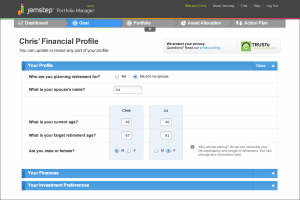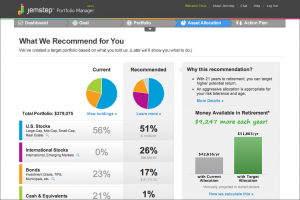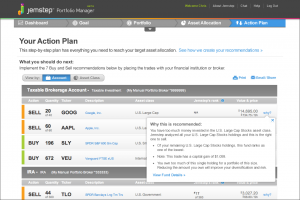I was a fee hater.
Like a younger, more handsome John Bogle, I would rail on fees. I’d stand on every rooftop screaming about avoiding fees at all cost.
For this reason, when I was a financial advisor, I provided what I thought was top-notch service and undercharged for it every day.
How much did I charge? My minimum fee was $500 per year.
Undercharged? There is no such thing, Joe! Less fees = better. Duh! You should have charged $300!
Think so, do you? Sit close, young padewan, while Uncle Joe tells you a story:
My Experience With Fees
Early in my career I lucked into the opportunity to give speeches on behalf of one of the top advisors in the country. I’d fly wherever he wished and spoke to rooms full of people about good planning. In exchange, he allowed me to move my offices into his suite.
Awesome! What a break for a new advisor; I’d get to see the inner workings of a well-honed operation and maybe glean some tips.
At first I was disappointed. All I saw was what looked like a cookie-cutter assembly line of advice and deliverables. Many clients received offshoots of similar advice. The firm never stuck their neck out. They avoided complex situations at all cost.
That lead me to believe that he was among the best in the country only because he could “sell” people on ways he’d jack up their fees.
…and jack he did. I rarely saw him charge less than $2,500 for planning, then garner asset management fees on top of that. He was a fee-based selling machine.
One day the operations manager and I were talking. I asked a polite question about how redundant their process management workflow seemed. To give you an idea of what I thought about this guy: I’m sure the term “cocky smartass” wouldn’t be far off the mark.
He said, “Have you noticed that we charge five times what you charge?”
I smiled. “Yes.” What a loser. I could never charge what they did! They were just leeches, skimming off of their client’s blood.
He said, “We charge five times more because we’re five times better than you.”
I took it personally.
I shouldn’t have.
Three months later, we were in agreement:
he was five times better than me.
Why He Was Better
This planner was so good, I’d worked right under his nose and hadn’t noticed his skill. The systems were sublime. Where I’d seen cookie-cutter assembly lines before, now I saw a brilliant asset allocation arrangement. Where I’d believed he was charging excess dollars to put boring plans in place, he was dotting every “I” and crossing every “T” for clients…mostly doing the boring stuff that usually was swept under the rug.
In short, he had a proven system of asset management and plan building. If you wanted that service, he covered his costs with his fees. If you didn’t want it, you should probably look elsewhere.
He didn’t try to be everything to everyone.
What You Can Learn
You don’t have to pay $2,500 or more to some advisor if you’re willing to perform the critical tasks that this advisor captained for his clients:
1) Design a plan that covers the six areas of financial planning and rigorously maintain the plan according to a set schedule. Make sure everyone involved is up-to-speed with the details.
2) Build a system to check and maintain your assets against your plan. He had systems in place to notify him when assets deviated too much from the plan. Build your own set of alarms.
3) Carefully guard against taxes and excess fees. This seems like an oxymoron, because this advisor charged a ton of money, but his fees were largely performance based. To increase his fees (and his client’s net worth) he had to ensure the plan was a lean-mean-return-gathering-machine. The only way to do that was to develop a comprehensive tax strategy (example: tax efficient investments outside of IRAs while tax-eaters inside shelters) and low-cost investments.
4) Scour insurances for opportunities. This advisor would review all of his client’s insurances regularly (every two years) to find wasted money. He’d also use insurances wisely to plug holes. One place he nearly always recommended: disability coverage.
5) Build legacies. He was the adamant that everyone either had a family or charitable organization they’d want to have flourish if they couldn’t use their own money. He’d make sure that the estate plan was air-tight and (as with insurance) review these plans every two years.
6) Set communication systems. Clients received a newsletter every six weeks. There was a conference call scheduled for two quarters of the year, along with two face to face meetings. Generally, the face to face meetings were comprehensive and the phone calls were “just checking up.” While he “allowed” only one member of a marriage to take part in phone calls, he was adamant that both spouses attend meetings. He’d become especially irate if one didn’t understand finances and didn’t want to participate. His thinking: if the knowledgeable spouse passed away, the other was screwed.
He also wasn’t afraid to call every client when markets imploded. During the 2002 and 2008 crisis, his whole team was on the phone non-stop, sharing information and passing along strategies. Usually, he wasn’t changing course, because his asset allocation model was already designed to weather downturns. However, clients loved hearing from him.
Was some of this overkill? Maybe. Often insurance and estate planning needs didn’t change. However, when something did, the advisor was on top of it fairly quickly.
It’s a Choice
During my 16 years as an advisor, there were many clients who refused to pay fees even though they would have been far better off had they paid this advisor. It’s fine to accomplish your financial goals without an advisor (in fact, if you’re willing to complete the six steps above, I’d recommend it). But if you decide not to, make sure you’ve designed systems for success and aren’t just being cheap.
Financial planning is just one example. Are there areas of your life where you’d be better off paying a fee and you just can’t do it? Are you cheap?
(Photo credit: Hands Clenching Dollars, Muffett, Flickr; Couple and Advisor, Jerry Bunkers, Flickr)













